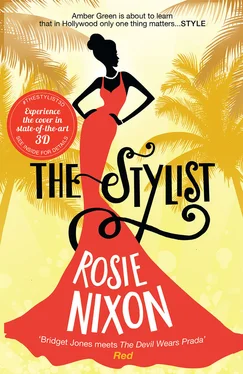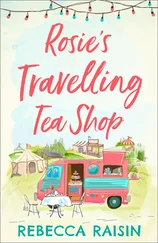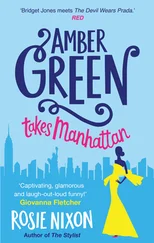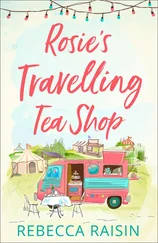We nodded as the enormity of the situation began to sink in. This visit to the boutique, on a Tuesday morning in late January, was to be Mona’s first this season, just before awards season kicked off in Los Angeles with the Golden Globes. Mona’s visits were always an ‘event’, even without TV cameras rolling, so this was set to be off the scale. Kiki, visibly about to burst at the seams of her skinny jeans, couldn’t hold it together any longer.
‘Oh. My. God. A camera crew! What the hell are we going to wear ?’
We both cracked up. Kiki and I were both obsessed with Mona, though for different reasons—Kiki from a bona fide fashion perspective (she would regularly study the minutiae of Mona’s outfits, to an extent bordering on OCD). For me, it was more of a morbid fascination. I wondered how she could function on a seemingly liquid diet of Starbucks, water and champagne. (There were no paparazzi photos in existence that showed her eating. Fact.) But what could not be denied was that Mona’s celebrity power was off the scale. Practically a celeb in her own right, the careers of the stars she counted as friends were built on column inches secured through the clothes she’d put on their skinny backs. For up-and-coming fashion designers, she was a ‘dress trafficker’, able to kick-start a label simply by placing their creations on the model of the moment. Yes, in our world, Mona was massive news, so it wasn’t surprising that today we were bordering on hysterical. What will we be like tomorrow?
On the morning of Mona’s visit, Smith’s was a flurry of activity as we vacuumed, steamed, straightened, dusted and generally tarted the place up. In the centre of the shop was a loosely set noughts-and-crosses board of square leather pouffes and two small glass-topped tables holding Diptyque candles and mineral water—though a glass of champagne was offered to those who looked like they had money to burn. This was one world where you mostly could judge a book by its cover. You could spot our customers a mile off: latest It bag hanging off her arm, rarely wearing a warm coat (who needed one when you cab-hopped around town?), sunglasses whatever the weather, breezing around in a delicious cloud of expensive perfume. Some of our best clients, many of whom were old friends of Jas’s from her catwalk days, frequently stayed in the shop for hours at a time, chatting, gossiping and, of course, buying clothes, especially once the champagne flowed. One regular recently bought the entire Chloé collection on a whim following four glasses of Perrier-Jouët rosé.
‘Her head will be aching tomorrow,’ Jas commented, as the woman left the store with eight immaculate shiny white Smith’s bags tied with bows. ‘But she won’t bring anything back. She’d rather die.’
Smith’s did that to women who were usually highly self-controlled. The thought of spending nearly two thousand pounds on a few items of clothing, in one shopping trip? It made my eyes water. I still couldn’t comprehend what it must be like to inhabit a world where a cheap bag cost three hundred pounds. That was almost half my rent for a month! But working at Smith’s, it had begun to feel like we were ringing Monopoly money through the tills.
Of course, most of the store’s reputation was down to its owner, Jasmine Smith—an elegant, fifty-something ex-model with cheekbones that make Kate Moss’s look fleshy. Jas’s talent for spotting a bestseller on the crowded runways of New York, London, Milan and Paris was second to none. But it was her skill in mixing up cutting-edge items from the designer collections with carefully chosen pieces from the debut lines of the fashion stars of tomorrow—often fresh from their Central Saint Martins graduation show—that had made Smith’s the most successful, long-running, independent luxury fashion outlet in central London and a destination for stylists and shoppers alike. ‘God is in the detail,’ is Jas’s mantra, and neither Kiki nor I would dare argue.
I was often mesmerised by my chic manager and her stylish customers. It was only now, after working here for the past twelve months, that I felt just about cool enough for this store. The truth was, I got the position by default. It was originally offered to my fashionista best friend and flatmate, Vicky, who then got her dream job as assistant to the fashion editor at Glamour magazine. I was temping at the time, which everyone knew was a fast track to nowhere, so she passed this job to me, and Jas said yes.
Until this position, I was more your average Debenhams devotee and Gok Wan fan. Topshop was my fashion frontline and Armani simply the fragrance my parents gave each other for Christmas. Yep, beneath this shiny new surface, I am one hundred per cent fashion fraud. I often see the real me, in the form of typical Westfield shoppers, peering into the window of Smith’s and looking confused.
‘Recession’s hit hard, this place is halfway to closing down,’ they remark, passing on by. At first glance, the shop’s white walls and oh-so-sparse rails might look as though we’re missing half our stock or have fallen victim to a Bond Street raid. But, as I have swiftly come to learn, true fashionistas know differently. The hardcore style set have Smith’s in their Smythson address books because this boutique is a fashion landmark.
Once you step through the glass doors and enter the inner sanctum, you are in an Aladdin’s cave, featuring a small, fully alarmed section of haute couture, rails of hot-off-the-catwalk pieces and Jas’s ‘ones to watch’. Either side of the cash desk stand two tall, highly polished, glass jewellery cabinets, filled with rings set with rare gems, shoulder-grazing earrings, waspish friendship bracelets and sparkling necklaces in pretty, contemporary designs, boasting price tags to make even the most fearsome fashion director pause. Then there are It bags, killer heels, painted pumps and chain-mail belts dotted around on white plinths and shelves, each presented as a unique work of art. Everything is to be admired, stroked, Instagrammed, Pinned, oohed and aahed over by every passing customer in turn. Smith’s has it all. But only in small doses.
‘Nothing makes an item more covetable than if you have to sit on a waiting list for six months before you get it,’ Jas informed me early on. The minimalist interior is down to our strict instruction to put only one of every design onto the rails. Of course, mostly, it’s just an illusion—we have all the sizes, colours and crops in the stockroom, downstairs in the basement, which is the size of the shop floor again but packed with polythene-wrapped clothing. It’s a clever ploy; thinking your size isn’t available only makes you desire something more. And then when we pop out of the stockroom, excitedly exclaiming, ‘You won’t believe it, Mrs Jones! We do have a 14 after all!’—well, they’re already punching in their PIN.
Of course, the hefty price tags at Smith’s are very real. That’s why, like most of the high-end store managers, Jas employs a full-time security guard to watch over the stock—in our case, a burly silver fox affectionately known as ‘Big Al’. He works here full-time, patrolling the boutique and keeping a trained ex-army eye on the very expensive items, which have actual alarms fitted. Though his six-foot-four frame doesn’t suggest it at first, he’s a teddy bear at heart and, like me, is now able to offer an informed second opinion on an outfit if a customer requires it. In fact, despite the fact he’s happily married with two grown-up children, Big Al loves the opportunity for a gentle flirt with a ‘lady who lunches’, especially when she’s in a quandary over whether to plump for the DVF wrap or the Hervé Léger body-con dress. He must be nearing retirement age, but when he removes his stiff guard’s cap to reveal a full head of salt-and-pepper hair, and you notice his bright blue eyes, it’s easy to imagine Big Al was a heartbreaker in his day. You’d be surprised how many phone numbers he’s had surreptitiously thrust into his big, capable palms. Uniforms really do work.
Читать дальше












